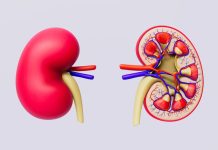
Liver cirrhosis is a serious condition where healthy liver tissue is replaced with scar tissue, severely impairing the liver’s ability to function properly.
This condition can develop due to various reasons including chronic alcohol consumption, viral hepatitis, and fatty liver disease. Understanding the symptoms of liver cirrhosis, especially in women, can be crucial for early detection and management.
Liver cirrhosis often progresses silently, with many people experiencing no symptoms in the early stages. However, as the disease advances, symptoms become more pronounced.
Women might experience some unique or more pronounced symptoms due to biological and hormonal differences.
One of the first signs of liver cirrhosis can be fatigue, which is often overlooked or attributed to less serious health issues. Women with cirrhosis might feel unusually tired despite getting adequate rest. This fatigue can be persistent and debilitating, affecting everyday activities.
Another symptom is jaundice, where the skin and the whites of the eyes turn yellow. This happens because the liver is unable to process bilirubin, a by-product of the breakdown of old blood cells. Women may notice this symptom more readily because of its visible nature.
Women with cirrhosis may also experience changes in their menstrual cycle. These can range from irregular periods to complete cessation of menstruation not related to menopause.
This symptom arises because cirrhosis can disrupt the hormonal balance necessary for regular menstrual cycles.
Abdominal bloating or swelling, known as ascites, occurs when fluid accumulates in the abdomen due to the liver’s reduced ability to produce albumin, a protein that prevents fluid from leaking out of blood vessels.
This symptom can be particularly uncomfortable and may be accompanied by swelling in the legs and ankles due to fluid retention.
Digestive issues are common and may include nausea, loss of appetite, and weight loss.
As the liver function declines, it becomes harder for the body to process and digest food, leading to these symptoms. Women may also experience more severe episodes of nausea compared to men.
Easy bruising and bleeding are other symptoms to be aware of. The liver produces proteins that help the blood clot, so when it’s damaged, even minor injuries can cause significant bruising or bleeding that takes longer than usual to stop.
Neurological symptoms due to the buildup of toxins in the blood that the liver can no longer filter can also occur. This can lead to a condition known as hepatic encephalopathy, manifesting as confusion, memory problems, and changes in mood and personality.
These symptoms can be more challenging to identify but are critical as they indicate significant liver impairment.
Research underscores the importance of recognizing these symptoms early. Studies suggest that early diagnosis and treatment can significantly impact the progression of liver cirrhosis and improve the quality of life. F
or example, a research study published in the World Journal of Gastroenterology emphasizes that recognizing the early signs of cirrhosis can lead to interventions that might halt progression and even reverse some effects.
In conclusion, liver cirrhosis is a severe and progressive disease, but understanding and recognizing its symptoms in women can lead to earlier and more effective management.
If any of these symptoms are noticed, it’s important to consult a healthcare provider for further evaluation and possible treatment. Early action can make a significant difference in managing the condition and maintaining a better quality of life.
If you care about liver health, please read studies about simple habit that could give you a healthy liver, and common diabetes drug that may reverse liver inflammation.
For more information about health, please see recent studies about simple blood test that could detect your risk of fatty liver disease, and results showing this green diet may strongly lower non-alcoholic fatty liver disease.
Copyright © 2024 Knowridge Science Report. All rights reserved.



